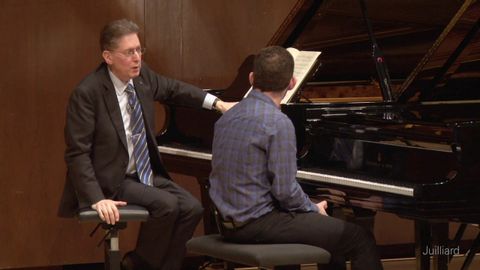マッケンジー・メレムド(ピアノ)|ジュリアード・ロバート・レビン ピアノ・マスタークラス (Mackenzie Melemed, piano | Juilliard Robert Levin Piano Master Class)
夢想 が 2021 年 01 月 14 日 に投稿  この条件に一致する単語はありません
この条件に一致する単語はありませんUS /ˈpɪriəd/
・
UK /ˈpɪəriəd/
- n. (c./u.)期間 : 時代;強調;終止符;生理;授業時間 : 時限
US /ˈfæsəˌnetɪŋ/
・
UK /ˈfæsɪneɪtɪŋ/
- v.t.魅惑的な;(視線で)捕らえる
- adj.魅惑的な
- n. (u.)魅力
US /ˈkærəktɚ/
・
UK /'kærəktə(r)/
- n.(物語 : 映画 : 演劇などの)登場人物;文字;性格 : 性質;変わっている人;評判
US /ˈɔdiəns/
・
UK /ˈɔ:diəns/
エネルギーを使用
すべての単語を解除
発音・解説・フィルター機能を解除

